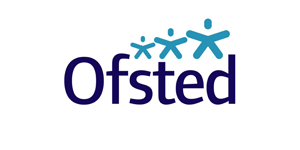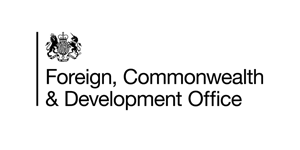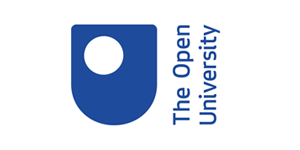‘Coaching is Coaching’: are there any differences between coaching in-company & individual clients?

‘Coaching is Coaching’: are there really any differences between coaching in-company and with individual clients?
Working both as an in-company coach and with individual clients, I have been reflecting if there are any differences between the two. Both types of coaching require the same essential solution-focused skills of listening, questioning, providing constructive feedback, summarizing, empathizing and so on. But there are some contrasts, which are worth exploring, as they can have implications for practice.
To give some background: I live in the Middle East, have worked across four continents and currently am employed in a multi-cultural company, which provides a rich palette for coaching. However, I am not considering cross-cultural coaching in this piece, although will refer to it where there I have observed differences. This is primarily about differences between in-company and independent client coaching.
First, contracting. When we are training, we can struggle with contracting and what it involves. When working as an inhouse coach, this takes on a very different meaning. I am ‘employed’ to be a coach rather than an independent coach providing support to a company. Although I may set out my own ‘rules of engagement’, I have to abide by what the company lays down regarding confidentiality, reporting on coaching sessions, aligning practice to company values, even if they do not fully align to my own. This means that I must decide before I take on this role whether I can live with the ‘contract’. Can I say to my sponsor or internal clients ‘thanks, but no thanks’ when I see an ethical problem or clash of values? Do I have any authority to negotiate? Pushback may come through building trust and respect, but in the early days, it is an important consideration. With private clients, I set the rules, I am prepared to negotiate, and I do say ‘no’ if I do not think I can help and/or the individual concerned needs a counsellor or therapist. I still do this, but it is much more difficult when working in-house.
Second, expectations. Employees at all levels are referred to me for all sorts of reasons. They vary from performance, to work relationships, to apparent emotional distress (especially recently during COVID-19) and even behavioral issues. There is often a blurring of the lines between coaching, mentoring, counselling and consultancy. Some internal clients do not want to be ‘coached’, which has its challenges. A small number may see coaching as a free service, in which they have no real investment, which is not to be taken seriously. Many from a range of different cultural backgrounds expect me to tell them what to do. Some cannot articulate what they want from the coaching, or simply do not know. Language is not the prime barrier – it is often ‘saving face’.
In contrast, a private client normally has an idea about what they want from coaching, even if their goals are not clear. This means that sometimes I have to take on in-company clients I don’t always want to. However, I normally do. I see them as a challenge – I have to listen even more intently and have the courage after an initial session to tell the individual, or their ‘sponsor’, where I cannot help, or they might need to be referred. Equally, I do not expect to be the dumping ground for problems that line managers should be able to resolve or a ‘teacher’ of specialist skills. Hence, at times, I have to coach the managers and senior executives of those I am coaching.
Third, practice versus process. Working in a highly structured environment, where procedures govern almost everything for primarily safety reasons, I find that my practice needs to ensure I largely work within the boundaries set by those procedures, even if I ‘flex’ or interpret them a little. However, I must adhere to the coaching process and best practice. For example, it’s very important to avoid making assumptions about what works, and hence to use techniques and models that are appropriate to the organization and the internal clientele. I find that, for example, engineers will embrace GROW, baulk a bit at scaling but find anything to do with PERMA a bit too airy-fairy. Techniques and models must also be relevant to the nationality of the client; for example, and without wishing to stereotype, Middle Eastern nationals often relate well to story-telling and visual stimuli and may like to experiment; western expats are likely to question and re-question options; east Asians will normally do their best to do what is asked of them and can be less inclined to think for themselves.
Fourth, time matters! When thinking about contracting and expectations, what is possible in specific timescales has to be set out very clearly in a schedule. I don’t deliberately under-promise and over-deliver, but I never over-promise. The schedule is often ignored – too often an internal client may ask for a meeting with five minutes notice. This may occur as the client has been asked to do something they don’t want to do, or should have completed by today and they’ve not thought about it. Alternatively, a schedule is set up and the client does not show. I understand in the corporate world things can be unpredictable, but please – be courteous! Coaching requires discipline, with a desire on the part of the client to learn ways to take ownership to find their own solutions, including time management – in other words, not the instant results referred to earlier.
Fifth, reputation. Poorly designed coaching that produces no outcomes in a corporate context will spread like wildfire. If the ‘water cooler gossip’ starts, your own reputation as a coach could be lost forever, as well as damaging coaching as a profession and even the organization in which you are working. Equally, I would think twice about risking your reputation by coaching in an organization or with employees who do not respect your values or struggles with ethical practices. This may also be closely related to expectation and having a very clear definition of what is, and is not, possible in a given timescale. Often persuading clients that they need to take ownership of their own development is one of the biggest challenges as they seek ‘instant results’. They might be encouraged to see that if coaching leaves them feeling much more energized, self-confident, in control, or their self-esteem has been raised, that is a good outcome. Unfortunately, others will want to see their performance rating move from average to exceptional almost overnight.
Finally, re-energizing. It’s true of all coaching, but when your potential client group is over 4,000 strong, it’s quite possible to feel overwhelmed by the sheer volume of clients coming your way, and the variety of challenges that come with them. Part of my practice is to schedule ‘me-time’, where I may sit and do nothing, stare at the sky and the birds or even turn on Netflix for light relief in order to clear my mind and allow my batteries to re-charge. In other words, to ensure my own wellbeing.
To summarize, in-company coaching is exciting and challenging, clients can come thick and fast, but the authority and boundary definition you have as an independent coach are not there. If you can live with that, it’s great, especially for building capability and gaining confidence for coaching independent clients. However, it is also vitally important to have supervision to stay focused and to avoid going so off-beam that you jeopardize your practice or values, especially where there is no one who can fulfil that supervisory role in the company. Finally, if you want to specialize as a coach, rather than see it as a holistic development process, perhaps think twice about becoming an in-company coach (unless employed specifically as a specialist). You may find you are variously being asked to deliver executive, business, career, life, wellbeing, or even relationship coaching.
Author:
Sue Parker, Executive Coach, BSC Alumni Member






